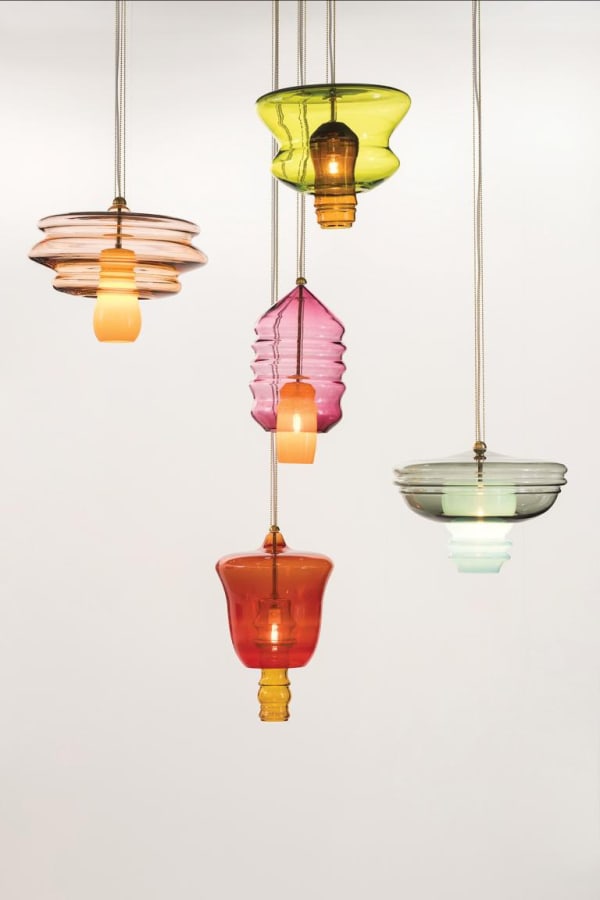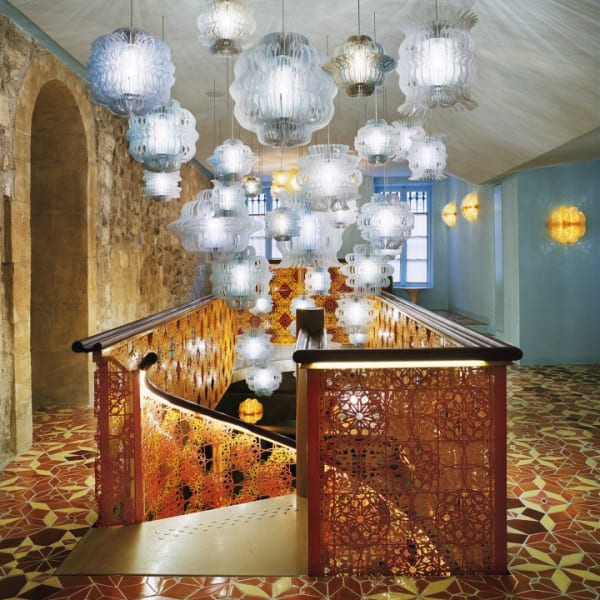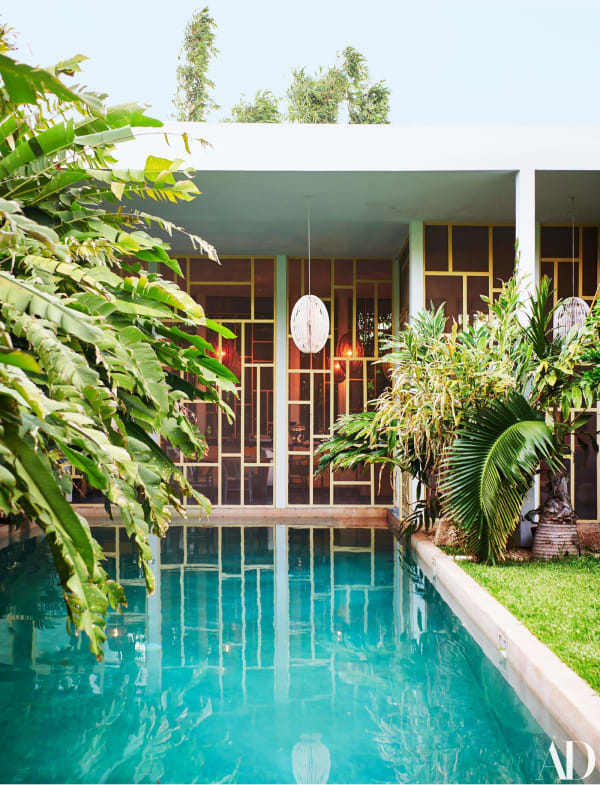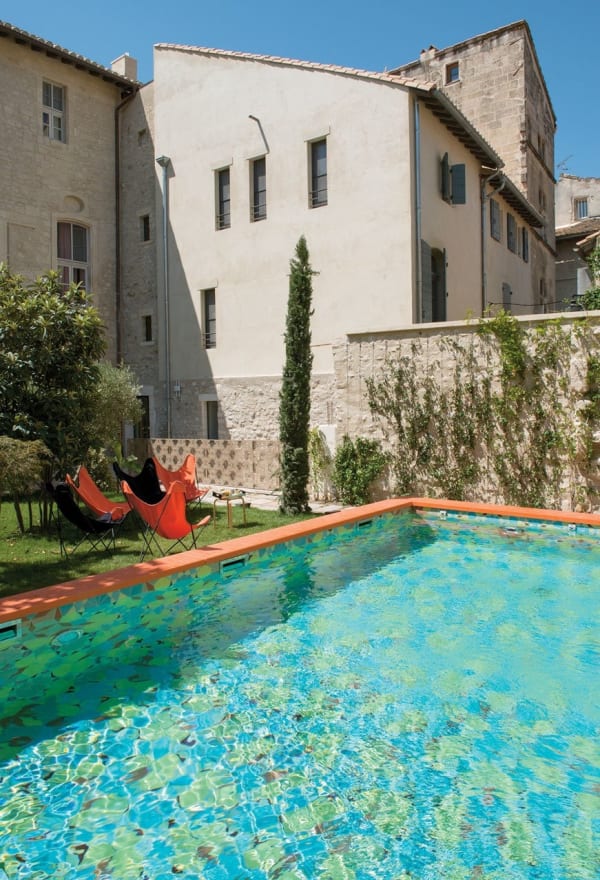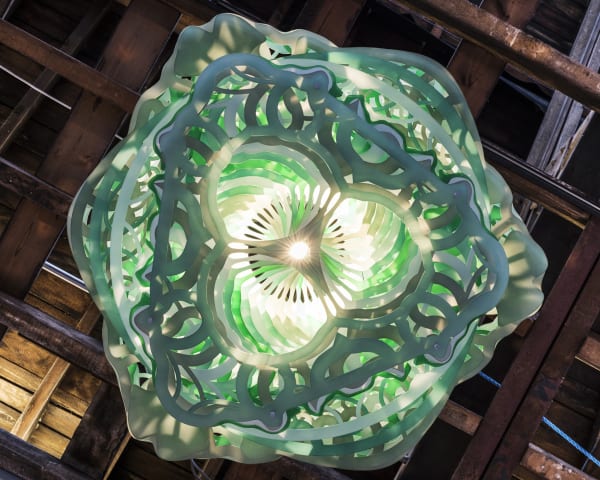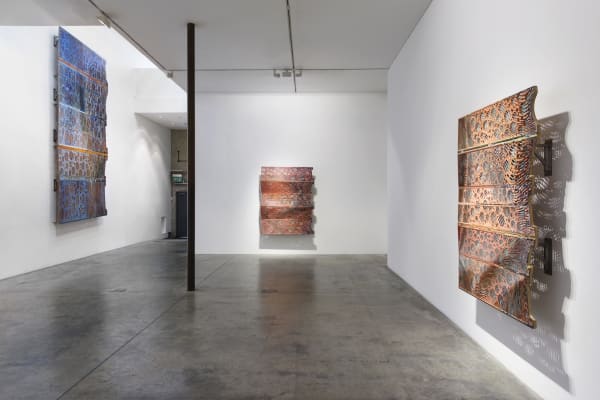Jorge Pardo
-
About
Celebrated for his use of vibrant colours, eclectic patterns and natural and industrial materials, Jorge Pardo, a MacArthur Fellow, has since the 1990s drawn on the historical intersections of fine art, architecture and design to create a highly individual body of work. Characterised by its fluidity between genres, his diverse output ranges from paintings, sculptures and murals to furniture and even entire buildings. Pardo’s focus on multiple meanings, purposes and contexts invites constant re-evaluation of objects, images and architectural space.
-
Biography
Born in Havana, Cuba, in 1963, Jorge Pardo relocated to Chicago, USA, with his family as a child. He studied at the University of Illinois, Chicago and received his BFA from Art Center College of Design in Pasadena, California. Most recently Pardo has been shown at Galerie Gisela Capitain (2020).
Pardo’s work has also been the subject of numerous solo exhibitions at international institutional venues including Museum of Art and Design at MDC, Miami, Florida (2021); Pinacoteca de Estado de São Paulo, São Paulo, Brazil (2019); Hacienda la Rojeña, Tequila, Mexico (2019); Musée des Augustins, Toulouse, France (2014); Irish Museum of Modern Art, Dublin (2010); K21 Kunstsammlung Nordrhein-Westfalen, Düsseldorf (2009); Los Angeles County Museum of Art (2008); and Museum of Contemporary Art, North Miami (2007).
He has been included in numerous group exhibitions including Joan Didion: What She Means, Hammer Museum, Los Angeles, USA (2022), travelling to Pérez Art Museum, Miami, USA (2023); Color as Program, Bundeskunsthalle, Bonn, Germany (2022); The Art of Assemblage, NSU Art Museum Fort Lauderdale, USA (2021); Konstantin Grcic & JorgePardo: The Museum is A Chair, Kunsthalle Bielefeld, Germany (2021); Arts – Crafts: Between tradition, discourse and technologies, Kunsthaus Graz, Austria (2019); Jorge Pardo: Flamboyant, Pinacoteca do estado de Sao Paulo, Sao Paulo, Brazil (2019); Welcome to the Dollhouse, MOCA Pacific Design Centre, West Hollywood, USA (2018); West by Midwest, Museum of Contemporary Art Chicago (MCA), Chicago, IL, USA (2018); Display – between art and arts & crafts, Applied Arts Pavilion, the 57th Biennale di Venezia (2017); Okoyama Art Summit (2016), Viehof Collection: International Contemporary Art, Deichtorhallen, Hamburg, Germany (2016); You’ve Got to Know the Rules … to Break Them, de la Cruz Collection, Miami, USA (2015); Beyond the Supersquare, The Bronx Museum of Arts, New York, USA (2014); KölnSkulptur #7, Skulpturenpark Köln, Cologne (2013); Print/Out, MoMA Museum of Modern Art, New York, USA (2012); Art of Communication: Anri Sala, Yang Ah Ham, Philippe Parreno, Jorge Pardo, National Museum of Art, Deoksugung (2011); The Jewel Thief, The Frances Young Tang Teaching Museum and Art Gallery, Skidmore College, Saratoga Springs (2010); theanyspacewhatever, Solomon R. Guggenheim Museum, New York, USA (2008); Index. Conceptualism in California from the Permanent Collection, The Geffen Contemporary, Museum of Contemporary Art, Los Angeles, USA (2008); Birth of the Cool. California Art, Design, and Culture at Midcentury, Orange County Museum of Art, Newport Beach, USA and tour (2007); Works from the Tate Collection, Tate Modern, London, UK (2006).
In 1996, along with artists including Carsten Höller, Pierre Huyghe and Rirkrit Tiravanija, Pardo was featured in Nicolas Bourriaud’s exhibition Traffic at CAPC Musée d’Art Contemporain de Bordeaux, in the catalogue for which Bourriaud coined the term ‘Relational Aesthetics’.
Permanent works and public projects include Hotel L'Arlatan, Arles, France (2018); Streetcar Stop for Portland, Regional Arts and Culture Council, Portland (2014); Plat 99, Bar and Lounge designed for The Alexander Hotel, Indianapolis, (2013); Tecoh, private residence, Yucatán (2012); Untitled (reinstallation of the Latin American Galleries), LACMA Los Angeles County Museum of Art, Los Angeles, US (2008); Untitled (Guadalajara Light Piece), Solares Foundation, Guadalajara (2005); House for Cesar and Mimi Reyes, Old San Juan (2004); Project, a reimagining of the lobby and new bookshop for Dia Art Foundation Chelsea, New York, US (2000); 4166 Sea View Lane, a proposal as part of an exhibition for LA MoCA to build an artist’s house on a hillside in Mount Washington, Los Angeles, for which Pardo designed every element of the building (completed 1998).
Pardo’s work is part of numerous public collections including the Museum of Contemporary Art, Los Angeles; Museum of Modern Art, New York; and Tate, UK. He has been the recipient of many awards including the MacArthur Fellowship Award (2010); the Smithsonian American Art Museum Lucelia Artist Award (2001); the Louis Comfort Tiffany Foundation Award (1995).
Jorge Pardo lives and works in Mérida, Mexico.
-
News
-

Jorge Pardo at SCAD Museum of Art
March 16, 2023Jorge Pardo's solo exhibition of newly commissioned work is now on view (until 2 July 2023) at SCAD Museum of Art, Savannah, Georgia, where the...Read More -

Jorge Pardo: Flamboyant at the Pinacoteca de São Paulo
December 7, 2019The exhibition (7 December 2019–2 March 2020) showcases an original interactive installation comprised of 14 pieces, which invites the public to experience a moment of...Read More -

Jorge Pardo is honoured by Storefront for Art and Architecture
May 22, 2019The artist is being honoured during Storefront for Art and Architecture's spring benefit on 29 May 2019. Born in Havana, Cuba in 1963, Jorge Pardo...Read More -

The FT writes about Jorge Pardo’s L’Arlatan hotel project
November 15, 2018An heiress and an artist have transformed a tired building in Arles into an eccentric experiment in design. By Claire Wrathall Not quite four years...Read More -

Architectural Digest features Jorge Pardo’s Yucatán oasis in Mérida, Mexico
November 7, 2018The artist takes AD inside his Yucatán oasis By Eve MacSweeney Jorge Pardo loves to build. And the Cuban-born artist, who divides his time between...Read More -

The New York Times features the Jorge Pardo-designed L’Arlatan hotel in Arles
September 11, 2018A Hotel Where Every Room Is a Work of Art. By Gisela William The artist Jorge Pardo makes work that not only lives outside the...Read More -

Jorge Pardo talks to Elephant Magazine about his Victoria Miro exhibition
February 9, 2018Jorge Pardo becomes architect and designer as he fills gallery spaces with furniture, pendant lights and paintings. Jonathan McAloon meets the Cuban-American artist to talk...Read More -

Jorge Pardo discusses his Victoria Miro exhibition with Wallpaper*
February 7, 2018Jorge Pardo on the ‘rustic’ digital technique behind his laser-cut chandeliers By Ali Morris Floating through the upper level of Victoria Miro gallery like a...Read More -

The FT previews Jorge Pardo at Victoria Miro
January 31, 2018The Cuban-American artist Jorge Pardo made his name in the late 1990s with colourful, exuberant works that set out to question the distinctions between fine...Read More
-
-
Gallery Exhibitions
-
Contact Form
Contact us regarding available works by Jorge Pardo


